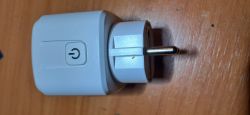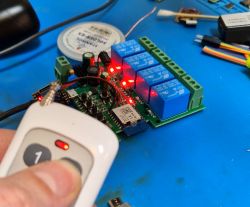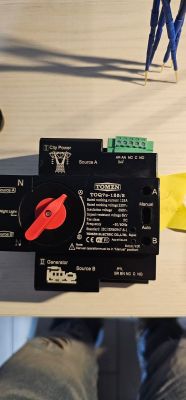I'm doing a project that would basically be finished if it weren't for the fact that I2c proved too slow even when refreshing only part of the screen.
The project generates the LTC Audio timecode, displays the timecode on the display and synchronises the TC with the clock from the GPS satellites.
Unfortunately, the project works fine up to 30fps settings (24,25,29.98,30fps including NDF and DF modes) at 50 and 60 frames there starts to be a problem with the display, which fails to display FF (LTC SPMTE clocks have the format hh:mm:ss:FF - where FF is the currently recorded frame). Up to 38 can handle the display.
The project is based on BLE 5.x and/or ESP_NOW connectivity, wi-fi depending on the definition in the configuration. It connects to the rest and announces what time it is up to 600ms and the receivers synchronise this time if the delay of their clock is too great.
up to 600ms and the receivers synchronise this time if the delay of their clock is too great.
I am using a SEEED XIAO ESP32C6, DS3231, NEO-6M in my project.
A0 is occupied by audio out
D4 and D5 are occupied by i2c clock ds3231 (also oled display 0.96 before)
D6 and D7 are occupied by serial for GPS data
D1-D3 and D8-D10 is free to use SPI unfortunately I have not been able to find a configuration on these pins to make this work.
I discovered that if I connect e.g. under the UART and use just the pin digit as described then the GPS does not connect but after changing the pins from 7 and 8 to D7 and D8 everything works. same with I2c. The problem arises with SPI because I'm wandering a bit in the dark....
wyswietlacz-lcd-ips-0-96-160x80px-spi
modul-seeed-xiao-esp32-c6-wifi-6-bluetooth-5
To date I have not been able to get it to work with this board.
Can someone post what useful schematic for connecting this display on ST7735s with Xiao esp32c6 module and a piece of code that will display anything on this screen?
I don't want some kind of ready made thing that does something I need to get out of a problem that's keeping me up at night. Let it display something, anything, and I can continue. Please take into account the number of pins on the board as there are not many. I won't need e.g. addressing the display because it's the last device of the project so no need to check which device is on SPI.
Thanks in advance for your help.
Links are for reference.
https://www.tinytronics.nl/image/cache/catalo...0-pixels-spi-st7735s-3.3v-front-1500x1500.jpg is the screen
https://www.sigmdel.ca/michel/ha/xiao/img/xiao_esp32c6_pinout_top.png is the board ...
The project generates the LTC Audio timecode, displays the timecode on the display and synchronises the TC with the clock from the GPS satellites.
Unfortunately, the project works fine up to 30fps settings (24,25,29.98,30fps including NDF and DF modes) at 50 and 60 frames there starts to be a problem with the display, which fails to display FF (LTC SPMTE clocks have the format hh:mm:ss:FF - where FF is the currently recorded frame). Up to 38 can handle the display.
The project is based on BLE 5.x and/or ESP_NOW connectivity, wi-fi depending on the definition in the configuration. It connects to the rest and announces what time it is
I am using a SEEED XIAO ESP32C6, DS3231, NEO-6M in my project.
A0 is occupied by audio out
D4 and D5 are occupied by i2c clock ds3231 (also oled display 0.96 before)
D6 and D7 are occupied by serial for GPS data
D1-D3 and D8-D10 is free to use SPI unfortunately I have not been able to find a configuration on these pins to make this work.
I discovered that if I connect e.g. under the UART and use just the pin digit as described then the GPS does not connect but after changing the pins from 7 and 8 to D7 and D8 everything works. same with I2c. The problem arises with SPI because I'm wandering a bit in the dark....
wyswietlacz-lcd-ips-0-96-160x80px-spi
modul-seeed-xiao-esp32-c6-wifi-6-bluetooth-5
To date I have not been able to get it to work with this board.
Can someone post what useful schematic for connecting this display on ST7735s with Xiao esp32c6 module and a piece of code that will display anything on this screen?
I don't want some kind of ready made thing that does something I need to get out of a problem that's keeping me up at night. Let it display something, anything, and I can continue. Please take into account the number of pins on the board as there are not many. I won't need e.g. addressing the display because it's the last device of the project so no need to check which device is on SPI.
Thanks in advance for your help.
Links are for reference.
https://www.tinytronics.nl/image/cache/catalo...0-pixels-spi-st7735s-3.3v-front-1500x1500.jpg is the screen
https://www.sigmdel.ca/michel/ha/xiao/img/xiao_esp32c6_pinout_top.png is the board ...






